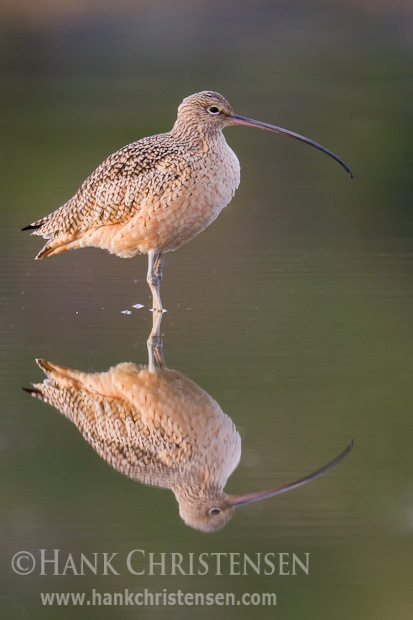
I’ve been busy with summer activities, and haven’t had time to process new photos lately. So I thought I’d share one from my archives that I like. Sometimes a very simple portrait composition can work well, especially if the bird has interesting features.
This curlew was standing as still as a statue is calm water. It was a good thing he was still, because the morning was a bit dark – the sun was just starting to rise behind some thick clouds, creating a gloomy morning atmosphere. On darker days, I have to bump up the ISO slightly in order to hold a reasonable shutter speed. In this case 1/320 seconds was fast enough to capture this immobile curlew. If he’d been feeding, it would have been much harder to capture his movements without blurring the photo.
My favorite feature of this photo is that the water was so still that it fades into a solid color abstract, both behind the bird, and around the bird’s reflection. This has the same effect as using a solid color backdrop for a studio portrait – it isolates the subject and removes all extraneous elements from the image. When I see a subject I want to photograph out in nature (be it a bird, sunset, tree or rock), I am constantly thinking about how I can simplify the image. After the initial excitement of a new shot passes, I step back and think, “What is this image all about?” Once I identify the aspects that drew my to that rock or that tree in the first place, I set about trying to remove any elements that don’t support the story I’m trying to tell in the image.
Sometimes, working an area can be difficult and frustrating – after all, nature is never a sterile, controlled environment. Sometimes however, as in the image above, a simplified image is given to me as a gift. I’m never one to complain about those images that come easily!


